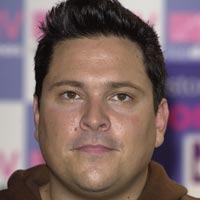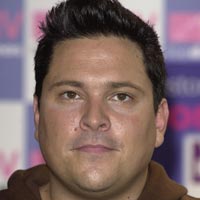More from the Jollymeister
Cambodia has it all, says Dom Joly.
Sizzling cuisine, ancient temples, wild jungle, buzzing cities... you might not even make the beach.
 Growing up, as I did, in war-torn Lebanon, there was always only one serious rival for the news headlines: Cambodia. As with Lebanon, the latter half of the 1970s was an appalling time for Cambodia, with the Khmer Rouge presiding over an attempt to return the country to an ancient agrarian society — “Year Zero” in their terminology. Estimates of the death toll vary between one and three million people. How does a country ever recover from such trauma and then attract tourists? Somehow, like Lebanon (one of this year’s Rough Guide must-see recommendations), Cambodia has done just that and is a “hot” destination.
Growing up, as I did, in war-torn Lebanon, there was always only one serious rival for the news headlines: Cambodia. As with Lebanon, the latter half of the 1970s was an appalling time for Cambodia, with the Khmer Rouge presiding over an attempt to return the country to an ancient agrarian society — “Year Zero” in their terminology. Estimates of the death toll vary between one and three million people. How does a country ever recover from such trauma and then attract tourists? Somehow, like Lebanon (one of this year’s Rough Guide must-see recommendations), Cambodia has done just that and is a “hot” destination.
No trip here is complete without a visit to the “Eighth Wonder of the World”, Angkor Wat. My first goal, therefore, is Siem Reap, a small town that has exploded with hotels and bars in the past 10 years as the world rediscovers the temples that surround the place. My guide, Ohm, a wonderful former monk with a huge smile and a wicked sense of humour, is an expert in when to go to which temple. He treats it very much like a military operation. The temperature can rise to a staggering 50C in the middle of the day; open spaces such as the main complex become huge ovens and are virtually deserted at this time. We decide that, armed with my special Milletts antisweat T-shirt (a life-saver) and a wide-brimmed hat, I am okay with extreme heat. We opt to visit Angkor Wat at lunchtime, and make dawn raids on the less famous surrounding temples.
That night, I sit on the terrace of my hotel nursing a cool beer and watching a temporary downpour dislodge thousands of leaves from the surrounding gumtrees. The twin-blade leaves twirl down like clouds of tiny helicopters as locals dash for cover. I am in love with this country already. The following morning I watch the sun rise over the extraordinary Temple of Bayon. It’s straight out of The Jungle Book — monkeys dance from tower to tower as the 200 stone faces that adorn the temple stare impassively out at visitors. I am absolutely blown away. I keep expecting to see King Louis supporting one of the crumbling towers. I start humming “I’m the king of the swingers, oh, the jungle VIP...”. Ohm looks at me curiously. He’s like some proud conjuror revealing trick after trick. We drive to Ta Prohm, an unbelievably atmospheric temple almost buried by the jungle. The roots of huge trees have wrapped themselves around the stones to become an intricate part of the structure. It’s no wonder they filmed Tomb Raider here. Once again I am the only person among the old stones. I pad about the place in silence save for the chirruping of birds high in the misty trees above. After a glorious 15 minutes of solitude, I spot a Polish tourist taking a complicated photograph of the tree roots. We stare at each other with hostility, both annoyed by an intruder spoiling our solitary adventurer fantasy.
I am loath to leave my new jungle home, but Angkor Wat beckons. We enter the huge complex on the stroke of noon. Curiously, although by far the best known of the temples, it is my least favourite. This is, however, only due to the sublime beauty of the others. The pineapple-like domes dominate the landscape, the surrounding moat still keeping the hordes to a trickle. What a sight this must have been in the 13th century, when it was entirely covered in gold.
In the wetter season I would have taken the option of a fast boat to Phnom Penh up the huge inland sea — it takes five to six hours and is supposed to be very scenic. It being the dry season, I hop on a plane and land in the capital about 40 minutes later. It’s mind-boggling actually to be in Phnom Penh, a city that dominated the World Service airwaves of my childhood. When the Khmer Rouge took over in April 1975, they proceeded to boot out almost the entire population to a hellish life of forced labour in the countryside. For four years the city had no more than 50,000 inhabitants — a ghost town in a land of ghosts. How things have changed. The capital today is a pulsating mass of humanity: the once-empty streets are packed with cars, tuk-tuks, mopeds, rickshaws, bicycles, trucks and elephants — all life is here.
I fall helplessly in love with the place from the moment I arrive. If I weren’t married with two children, I’d move here tomorrow. The city oozes life and vitality. I spend a couple of days just sauntering around, letting the place seep into my pores, and start to develop a routine. In the morning I have a swim at the hotel — Le Royal, one of the grand old hotels of Southeast Asia. I think about the great journalists who have worked and played here: Jon Swain, who wrote the wonderful River of Time; John Pilger, whose harrowing documentary Year Zero, The Silent Death of Cambodia alerted the world to the terrible things that had happened here. I sip a freshly squeezed lemon juice and pretend that I’m a great foreign correspondent about to drive out of the city to smell the cordite and earn my spurs.
I take a tuk-tuk down to the riverside, where the mighty Mekong and the Tonlé Sap meet. A cooling breeze makes the air bearable. I sit and watch the flow of human traffic pass by. Saffron-robed monks take photographs of each other, as little kids play what seems to be the national sport — a kind of Hacky Sack with an oversized shuttlecock. I think about trying to start this craze in the UK. I could source the shuttlecocks, fly over a display team: it would be the playground hit of next year... then I remember that I’m a rubbish businessman. An elephant trudges calmly past alongside an elderly mahout. Cars seem remarkably unaffected and weave around it. I try to find the hilarious little girl who hassles tourists as they leave the impressive Royal Palace. Her schtick is to find out what nationality the visitors are and then fire a couple of phrases at them in their native tongue. My favourite was when she found out that one couple were Australian: “Omigod, a dingo stole my baby!” she screamed in a broad Aussie accent.
I spend the afternoon wandering around the “Russian Market”. It acquired this name in the 1980s, when Russians were the only visitors to this city. Like all great markets, it’s a confusing maze of stalls and alleyways. I find a little teashop in the centre and sip the sweet liquid in a shady alley. It’s now devilishly hot and only mad dogs and Englishmen are out and about as most of the city sleeps. I find a large group of tuk-tuks under a tree. All the drivers are asleep along with most of the mad dogs. One driver eventually wakes up and groggily takes me to the Foreign Correspondent’s Club. This is my home from home. I sit on the open terrace overlooking the river while nursing one of many cool Angkor beers to come. The Cambodians are obsessed with their world-beating temple. It is on both the national flag and their national beer. I spend the evening reading The Gate, a brilliant book by François Bizot. He is a Frenchman who was captured and then released by the Khmer Rouge (a rare thing) and then survived the fall of Phnom Penh, sheltering in the French Embassy before being evacuated to Thailand.
Sitting high above this pulsating city, watching the medley of boats make their graceful way down the river, I catch a glimpse of what made this place such a paradise to so many before the war. To me, the newcomer, it still is a paradise, although of a different kind. I haven’t even the time to visit the coast that is being hailed as the “new Thailand”. But who needs a new Thailand when you’ve got wonderful new Cambodia? If you visit one place this year, then let it be this beautiful, awe-inspiring, magnificent country. The credit crunch has delayed the deluge, but it won’t be long. Go now — you’ll never regret it.
Dom Joly was a guest of Audley. Travel details: Audley can tailor-make trips throughout Cambodia. A nine-day itinerary, staying at the FCC in Siem Reap, and Raffles, in Phnom Penh, starts at £1,650pp. The price includes flights from Heathrow or Manchester with Singapore Airlines (via Singapore), as well as domestic flights between Siem Reap and Phnom Penh, and a guide and driver throughout the trip. Contact Audley for details of connecting flights from other UK regional airports or Ireland. Other operators include Trips Worldwide, Cox & Kings or Bales Worldwide. Copyright 2009 Times Newspapers Ltd.
Labels: Dom Joly, Sunday Times


